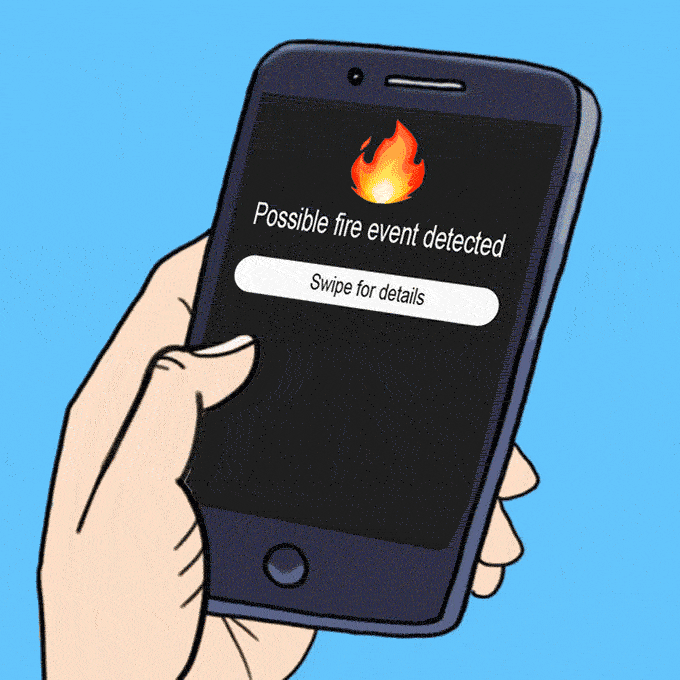I only read the abstract, but the conclusion actually surprised me.
Well written. The English grammar also excellent. I wonder if it’s translated from German… (which I recently learned was the origin of English after an invasion of the British Isles)
At last the stats.
Each lithium fire, being a “new” thing, is selling newspapers.
Like the comparison of risk of a home lithium battery fire to tumbler risks ito fire cause.
Thanks @_a_a_a
Man, this is off topic, but I had a good laugh at this yesterday, so I want to share this with more people. It’s about how the British broke the Enigma encryption (and it has to be said, for completeness, that the Polish did it first, but more work was required). The entire exercise rested upon working out the “key” (aka the rotor choices, starting positions and plug-board setup), and they did this through what we would today call a “known cleartext attack”.
They knew that the Germans were quite fond of ending a message with the local version of “long live the King”. Weather reports had a pretty standard format, so you could usually guess which word was “weather”. The algorithm had a feature, which turned out to be a weakness, where a letter is never mapped to itself. This meant you could quickly (as fast as the mechanical computer of the day could run anyway) test a guess. But mostly… and this is the part I found extremely humourous: There was this one guy on the Western front who sent “Nothing to report” on a daily basis… because protocol, you know.
So, what the British had to do, is leave this guy alone so he would keep sending that message every day.
War is sometimes funnier than you know.
Without standardised reporting for fire events the authors probably did as well as can be expected. While the conclusion about the apparent low fire risk associated with Home Battery Storage is likely fairly safe, I am not convinced of the accuracy of the specific fire probability number or the “similar to a tumble dryer” comparison.
Their source for “fire causes” is a database of insurance investigations which states:
The IFS carried out almost 2000 fire cause investigations last year. The main investigations were fires that caused significant damage in and to buildings. The investigation results are collected in the IFS damage database and statistically evaluated. This results in the fire cause statistics.
The present evaluations are therefore based on detailed investigations by the technical specialists of the IFS. The clients determine the criteria on which the IFS is commissioned.
In this respect, the statistics are not representative of the entire damage event.
*Emphasis my own
Under the “electricity related fire causes” the IFS stats distinguish between the installation (i.e. “wiring of premises”), Devices (appliances) and “Other”. What the authors do not mention is that
It should be noted here that the category “other electrical installations” in the IFS damage database includes photovoltaic systems and stationary energy storage systems, among others
and
The categories “distributions” (on average 19%, in 2021 31%) and “other electrical installations” (on average 21%, in 2021 23%) are becoming increasingly common
*Emphasis my own
The insurance investigators having to shoehorn thousands of events into manageable data end up with problematic categories. For instance, if the electric cord of the appliance is damaged (cord pinched between appliance and wall/floor) leading to a short, leading to a fire - this is chalked up as an appliance fire (if it was a tumble dryer, this counts as a tumble dryer fire). While the presence of that appliance may be associated with an increased risk of fire compared to the absence of such an appliance, there can really not be a conclusion about the relative safety of the device. If properly installed the risk should drop exponentially. If unplugged the risk should be zero. The same does not hold true for a battery as it is not a “passive device”. Ageing cells and possible dendrite formation add a risk dimension that probably does not have an equivalent in an aging tumble dryer?
So, with incomplete and far from ideal data as well as indications of an apparent increasing trend in home storage related fires, I think the published fire probability number has little use as yet.
more nit-picking:
Some of the source referencing does not fully gel but I suspect error in translation/formatting more than fabricated source material (it is no mean feat jumping between various academic/journal referencing standards).
there is also the question of receiving funding from the battery storage industry but without “big” [oil/pharma/battery/EV/dogfood], paying for it, research/academic work is unlikely to happen.
Better we then keep it omitted then ja? ![]()
But dang Village, you pulled the rug from underneath us again after a brief spite of the tumble dryer being same risk.
But whatever the final truth one day, batteries are moving outside the house, for they do store a lot of energy.
don’t think the rug moved - the actuaries and other “numbers people” are pulling their hair out at me taking on probability stats ![]() . I do think though that the German authors did not have access to reliable enough statistics on battery fires (they had to crawl the web for news reports etc.) to make a real meaningful calculation.
. I do think though that the German authors did not have access to reliable enough statistics on battery fires (they had to crawl the web for news reports etc.) to make a real meaningful calculation.
Stats removed from context should also be approached with caution. iirc there were multiple reports of a certain brand of battery that seem to be associated with fires in Germany. If this brand/chemistry is not found in my neck of the woods, the fire risk from my “lithium” battery could be even lower than from my tumble dryer.
I am getting visions of

